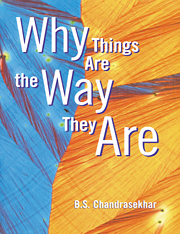Book contents
- Frontmatter
- Contents
- PREFACE
- I INTRODUCTION
- II CRYSTALS
- III PARTICLES AND WAVES
- IV THE ATOM
- V STATISTICAL PHYSICS
- VI THE QUANTUM MECHANICAL CRYSTAL
- VII COPPER WIRES AND GLASS RODS
- VIII SILVER SPOONS AND PLASTIC SPOONS
- IX GLASS PANES AND ALUMINIUM FOILS
- X ELECTRIC BULBS AND INSULATED CABLES
- XI MAGNETS
- XII SUPERCONDUCTORS
- XIII CONCLUSION
- GLOSSARY
- INDEX
XIII - CONCLUSION
Published online by Cambridge University Press: 20 October 2009
- Frontmatter
- Contents
- PREFACE
- I INTRODUCTION
- II CRYSTALS
- III PARTICLES AND WAVES
- IV THE ATOM
- V STATISTICAL PHYSICS
- VI THE QUANTUM MECHANICAL CRYSTAL
- VII COPPER WIRES AND GLASS RODS
- VIII SILVER SPOONS AND PLASTIC SPOONS
- IX GLASS PANES AND ALUMINIUM FOILS
- X ELECTRIC BULBS AND INSULATED CABLES
- XI MAGNETS
- XII SUPERCONDUCTORS
- XIII CONCLUSION
- GLOSSARY
- INDEX
Summary
I compared our journey through this book to a mountain ramble. The last chapter, about superconductivity, is like a high peak in the landscape of condensed matter physics. I should like to look back at the terrain we have covered to get there. What I have in mind here is not a summary of the preceding chapters, but rather a review of the key elements necessary for our understanding of the properties of condensed matter. These elements belong to three fundamental parts of physics: quantum mechanics, statistical physics, and electromagnetism. We refer to them as theories, but in a very precise sense. They are supported by vast numbers of experiments, and they predict correctly the results of new experiments. The word theory as used here has a significance different from what it has in everyday language as in ‘I have a theory about why it always rains on Saturdays.’
Quantum mechanics is the language in physics that we use to describe the world. It incorporates the fact that everything around us is sometimes particle-like, and sometimes wave-like. This basic duality of nature leads to a kind of graininess: just as matter comes in discrete units like electrons and protons and not fractions thereof, quantities like energy and momentum are quantized and cannot take on any arbitrary value we wish. The wave aspect of nature is an expression of a fundamental indeterminism.
- Type
- Chapter
- Information
- Why Things Are the Way They Are , pp. 235 - 237Publisher: Cambridge University PressPrint publication year: 1997

